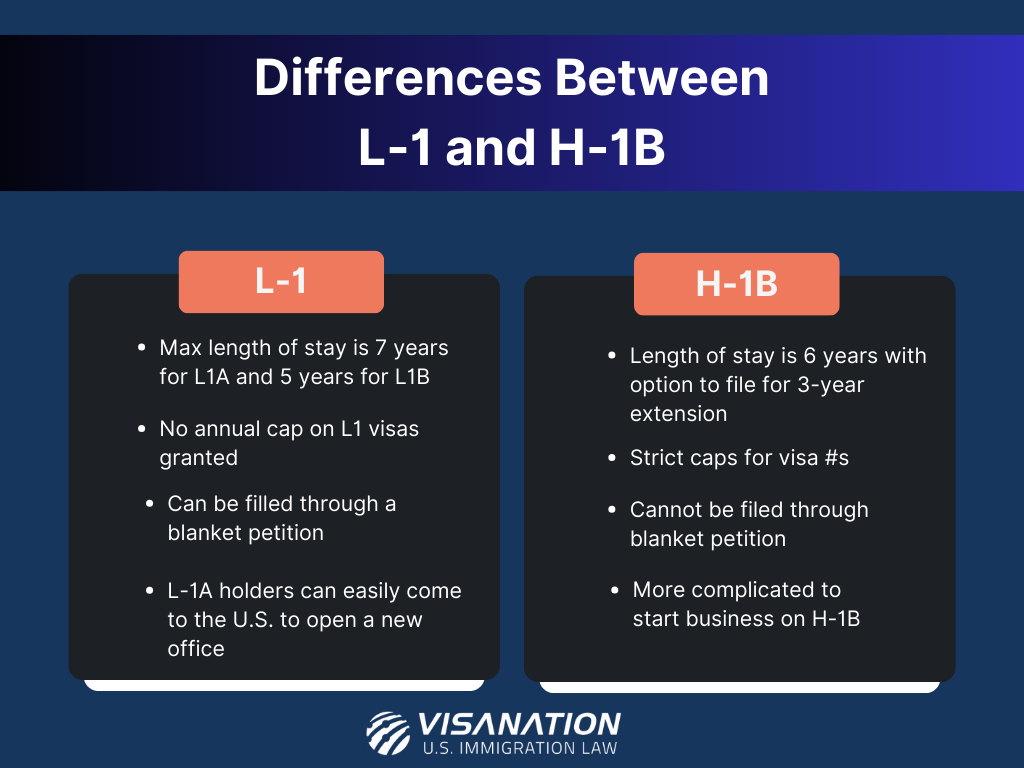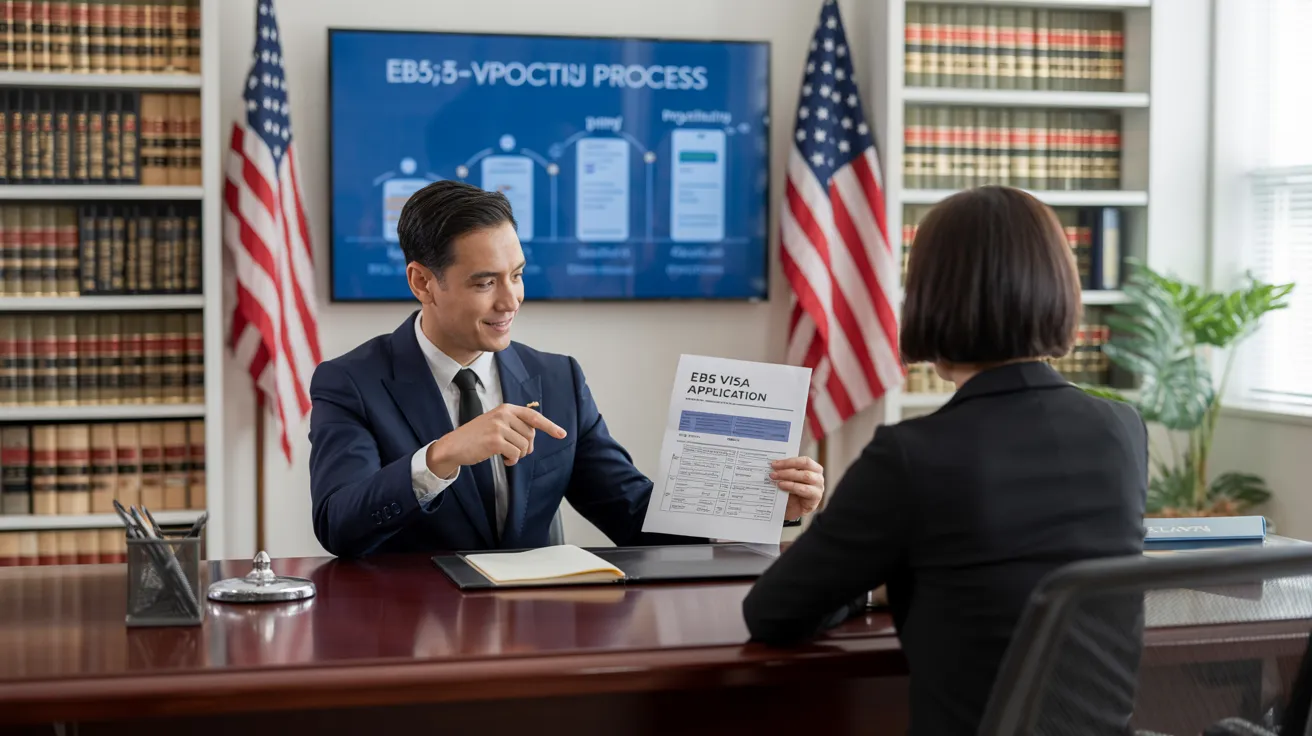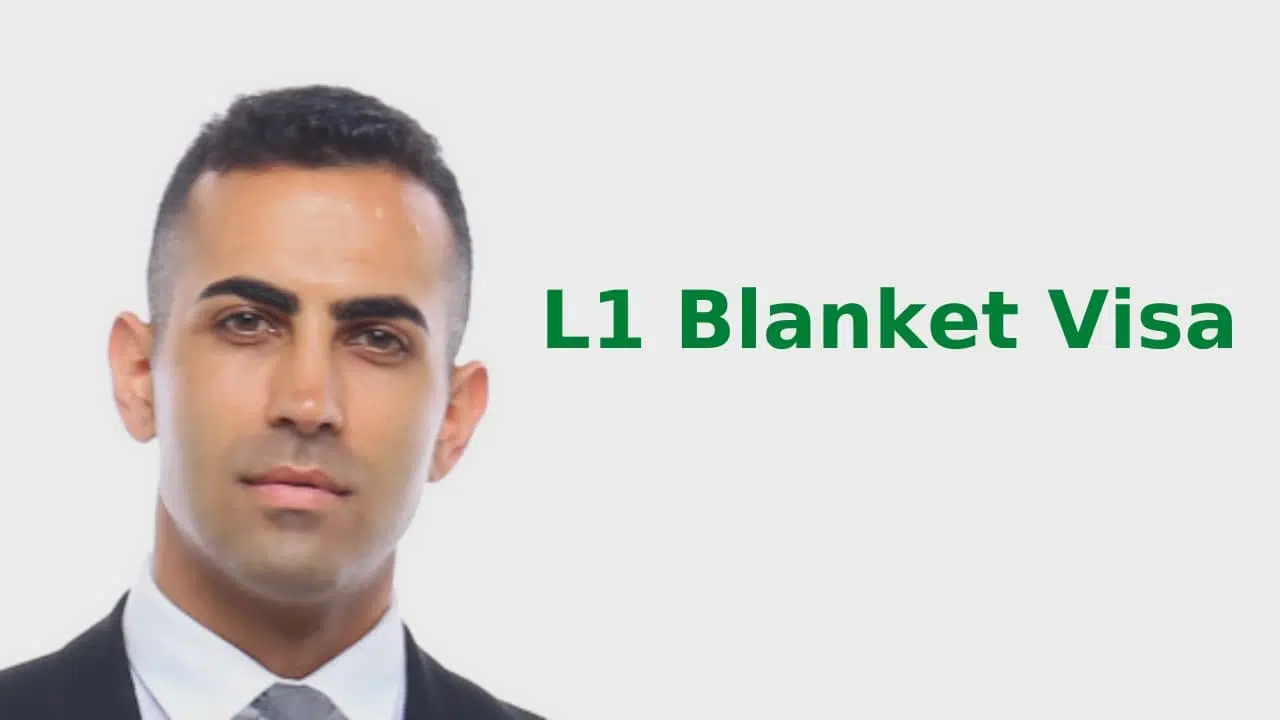L1 Visa Explained
Wiki Article
Fascination About L1 Visa
Table of ContentsNot known Details About L1 Visa L1 Visa - TruthsAn Unbiased View of L1 VisaAll About L1 VisaThe Basic Principles Of L1 Visa The 10-Second Trick For L1 Visa
Offered from ProQuest Dissertations & Theses International; Social Science Premium Collection. DHS Workplace of the Inspector General. Fetched 2023-03-26.
United State Division of State. Retrieved 22 August 2016. "Workers paid $1.21 an hour to set up Fremont tech firm's computer systems". The Mercury News. 2014-10-22. Recovered 2023-02-08. Costa, Daniel (November 11, 2014). "Little-known short-term visas for foreign technology employees dispirit earnings". The Hill. Tamen, Joan Fleischer (August 10, 2013). "Visa Holders Change Employees".
Getting My L1 copyright Work
In order to be eligible for the L-1 visa, the international company abroad where the Beneficiary was used and the U.S. business should have a certifying relationship at the time of the transfer. The different types of qualifying partnerships are: 1.
Example 1: Business A is incorporated in France and employs the Recipient. Company B is integrated in the united state and desires to petition the Recipient. Firm A has 100% of the shares of Business B.Company A is the Moms And Dad and Firm B is a subsidiary. There is a qualifying relationship in between the two companies and Firm B must be able to fund the Recipient.
Company An owns 40% of Company B. The continuing to be 60% is possessed and controlled by Company C, which has no relationship to Firm A.Since Business A and B do not have a parent-subsidiary relationship, Business A can not sponsor the Beneficiary for L-1.
Instance 3: Firm A is integrated in the united state and wishes to request the Beneficiary. Firm B is integrated in Indonesia and employs the Recipient. Business An owns 40% of Firm B. The continuing to be 60% is owned by Company C, which has no relationship to Business A. However, Firm A, by formal agreement, controls and complete manages Business B.Since Company An owns much less than 50% of Company B yet takes care of and regulates the business, there is a certifying parent-subsidiary connection and Company A can sponsor the Beneficiary for L-1.
The Best Guide To L1 Visa
Company B is included in the U.S.Not known Details About L1 Visa

The L-1 visa is an employment-based visa classification established by Congress in 1970, permitting international companies to transfer their supervisors, executives, or essential employees to their united state operations. It is frequently described as the intracompany transferee visa. There are 2 major sorts of L-1 visas: L-1A and L-1B. These types are appropriate for employees hired in different placements within a firm.

In addition, the beneficiary should have worked in a managerial, executive, or specialized staff member placement for one year within the 3 years click here coming before the L-1A application in the international business. For new office applications, foreign employment should have been in a supervisory or executive ability if the recipient is concerning the USA to function as a supervisor or exec.
The Buzz on L1 Visa

If provided for an U.S. company operational for even more than one year, the initial L-1B visa is for up to three years and can be expanded for an added 2 years (L1 Visa). On the other hand, if the united state firm is newly established or has actually been functional for much less than one year, the initial L1 Visa law firm L-1B visa is issued for one year, with extensions offered in two-year increments
The L-1 visa is an employment-based visa group developed by Congress in 1970, enabling international firms to move their supervisors, execs, or crucial employees to their United state operations. It is frequently referred to as the intracompany transferee visa.
Things about L1 Visa
In addition, the recipient has to have operated in a supervisory, executive, or specialized staff member position for one year within the 3 years preceding the L-1A application in the international firm. For brand-new workplace applications, foreign work needs to have been in a supervisory or executive ability if the recipient is coming to the United States to function as a supervisor or exec.for as much as seven years to oversee the procedures get started of the U.S. associate as an executive or supervisor. If issued for a united state company that has actually been operational for greater than one year, the L-1A visa is initially granted for as much as three years and can be prolonged in two-year increments.
If granted for an U.S. firm operational for even more than one year, the preliminary L-1B visa is for up to 3 years and can be extended for an extra 2 years. On the other hand, if the U.S. firm is freshly developed or has been operational for much less than one year, the initial L-1B visa is released for one year, with extensions readily available in two-year increments.
Report this wiki page